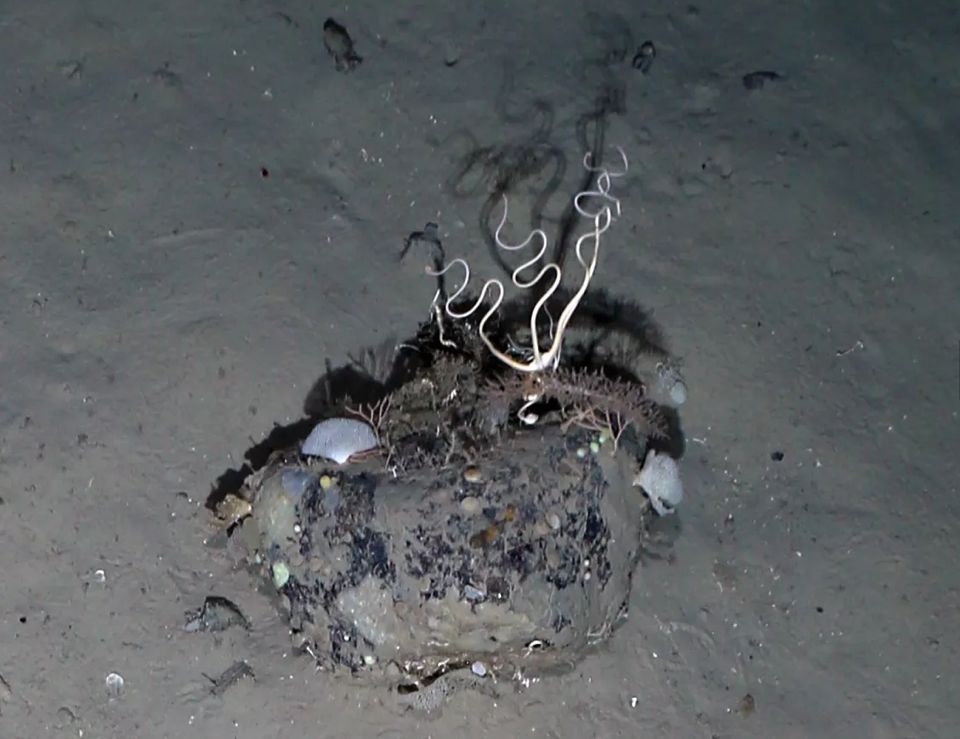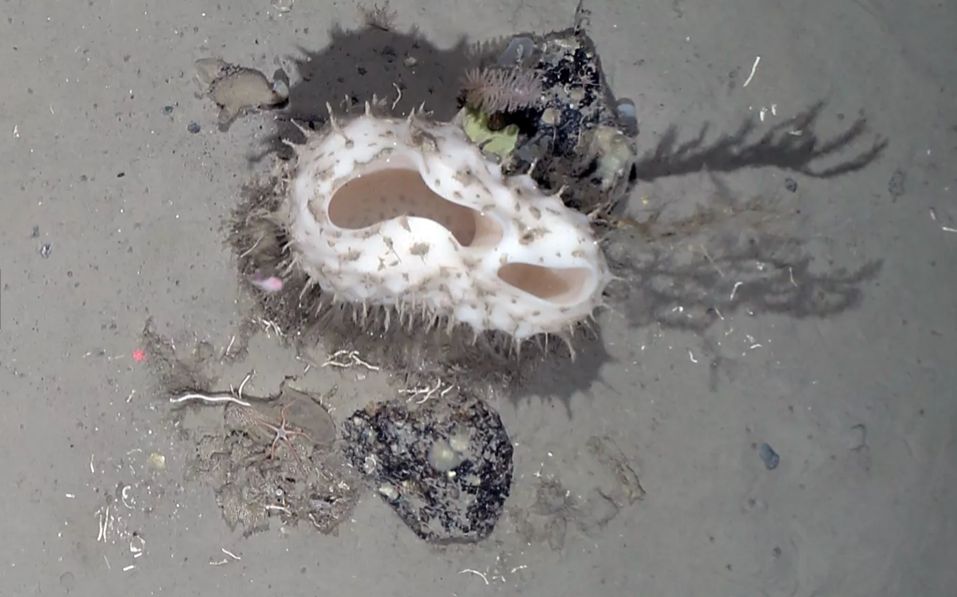A mega-iceberg called A74 broke apart from the Brunt Ice Shelf in the Antarctic, leaving the seafloor exposed for the first time in 50 years.
It has roughly an area of 790 square miles which is a rare occurrence for its size. Fortunately a German research ship, the Polarstern, was nearby to examine the iceberg. Alfred Wegener Institute (AWI) operates the ship’s polar expedition. The scientists onboard discovered remarkable biodiversity beneath the ice shelf.

Iceberg A74 uncovered lifeforms that previously couldn’t be observed. One of the photos they shared was of a type of brittlestar starfish. It can be identified by its white curled features which are its arms.
Researchers found at least five species of fish, two species of squid, sea cucumbers, mollusks, among many others.
Another photo shows a sponge of almost 30 cm in diameter affixed to a small stone.

Scientists on the Polarstern conduct research in the area to get a better understanding of how global warming will affect Antartica. They monitor and study the processes of glacial calving events such as the breaking of iceberg A74. Their observations allow them to collect data to create computer models as well.
Other POP! stories you might like:
Are cuttlefish more patient than us? Cephalopod passes marshmallow test
Biggest known asteroid is passing by Earth on March 21
Planet discovered by teenage NASA intern looks like a BTS album cover
Intel converts “I’m a Mac” actor Justin Long to switch to PC
Museum curators ask players to help archive Animal Crossing: New Horizons
READ MORE:
Create new memories at home with the perfect partner for unlimited home entertainment
https://www.scoutmag.ph/news/internet/how-to-spend-qt-with-your-ride-or-die-internetcore-style-jeloug-20210309
https://preen.ph/120896/80s-90s-makeup-trends-comeback-ever-bilena-38th-anniversary

